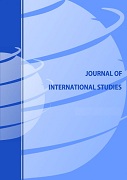GAME OF TARIFFS: THE IMPACT OF MARKET CONCENTRATION ON INTERNATIONAL TRADE
GAME OF TARIFFS: THE IMPACT OF MARKET CONCENTRATION ON INTERNATIONAL TRADE
Author(s): Sławomir KalinowskiSubject(s): International relations/trade, Methodology and research technology
Published by: Fundacja Centrum Badań Socjologicznych
Keywords: international trade; tariff rate negotiations; market structures; Kalai–Smorodinsky bargaining solution;
Summary/Abstract: The article investigates the impact of the concentration, measured by the number of firms in the exporting industry, on the tariffs and welfare generated by international exchange. The research was conducted in two dimensions. First, the model of bilateral trade exchange between two economies was tested in terms of a non-cooperative game. Nash equilibria point to the tariff rates which negatively depend on the number of firms in the exporting industry. The welfare grows with increasing competition, but its marginal value diminishes. The second perspective was the application of the Kalai–Smorodinsky bargaining solution in order to indicate the outcome of a cooperative version of the game. The cooperative solution was always a zero tariff option for symmetric market structures. If there is a more competitive exporting industry in one country, it should negotiate a tariff higher than zero, whilst a country with less competitive exporters should agree upon a zero tariff. Such an outcome of negotiations is hard to achieve from a political point of view.
Journal: Journal of International Studies
- Issue Year: 13/2020
- Issue No: 4
- Page Range: 248-258
- Page Count: 11
- Language: English

